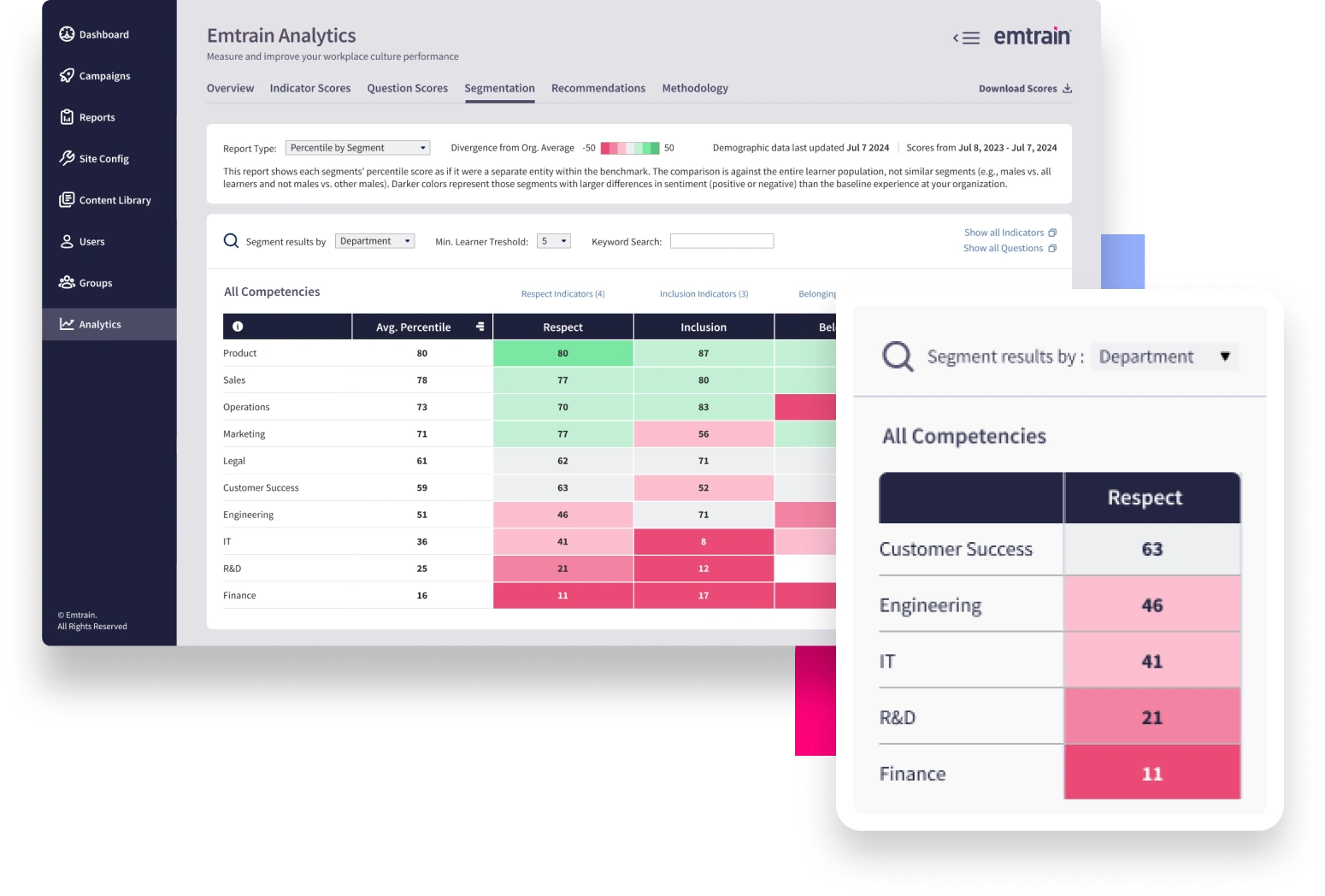The First Amendment protects the right to free speech but comes with responsibilities, especially in the workplace. While individuals are entitled to express themselves, workplace communication must be inclusive, respectful, and compliant with anti-discrimination and harassment laws. This means that speech involving protected characteristics such as race, religion, gender, or nationality must adhere to workplace policies that foster a respectful environment.
Emtrain’s harassment training course is engaging, interactive, and designed to spot and reduce EEO risk.

The First Amendment guarantees the freedom of speech, but it does not provide unlimited protections in workplace settings. Employers can implement policies that restrict certain types of speech if they interfere with creating a safe, inclusive, and respectful work environment. For example:
Free speech, as guaranteed by the First Amendment, protects individuals from government censorship but does not extend to private workplaces. Employers have the responsibility to foster a culture that upholds company values and prevents harassment or harm.
Example:
In a scenario where an employee makes offensive remarks about a colleague’s cultural background during lunch, the employer must address the behavior promptly to maintain workplace harmony.
Employers must educate their teams on the distinctions between free speech in public spaces versus private work settings. Encouraging constructive feedback and open dialogue supports a culture of mutual respect while upholding organizational policies.
Training programs should emphasize:
By balancing free speech with inclusivity, employers can create workplaces that encourage diverse perspectives while fostering collaboration and productivity.
Inclusive language ensures that workplace interactions respect diverse perspectives and backgrounds. Statements that dismiss or marginalize others can lead to a hostile environment. Reframing such language to be respectful and inclusive is a critical skill.
In this video, employees discuss the cancellation of a cultural event during lunch. One employee’s comment, “Send them back where they came from,” is corrected by a colleague who reminds them of the importance of respectful communication, especially in the workplace.